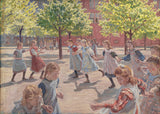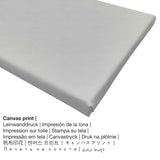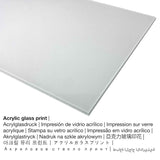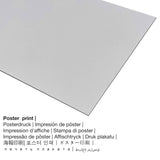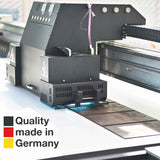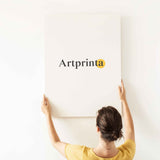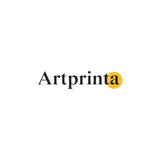Peter Hansen, 1908 - Egwuregwu ụmụaka, Enghave Square - ọmarịcha nka
Ụtụ gụnyere. Mbupu gbakọrọ na ndenye ọpụpụ.
(© - nke Statens Museum for Kunst (National Gallery of Denmark) - Statens Museum maka Kunst (National Gallery nke Denmark))
Hand in hand, a chain of little girls surge ahead, trying to catch their friends. The dynamic movement is accentuated by abrupt cropping and flickering reflections in the girl’s faces and the new-leaved trees.
The painting's motif The scene is from Copenhagen, specifically Enghave Plads on Vesterbro. From 1905 onwards, Peter Hansen kept his winter dwelling on Enghavevej, and he found most of his urban scenes in his neighbourhood. Without any indignation, but with keen interest in social issues he depicted modern life. He treated the idyllic aspects such as children playing and men enjoying a Sunday beer, but the vagabonds on Christianshavns Vold were also included in his image of the world.
The artist's association Fynboerne As a student at Zahrtmann’s School during the years around 1890, Peter Hansen met two other artists from Funen: Johannes Larsen (1867-1961) and Fritz Syberg (1862-1939). Their friendship came to be at the heart of the artist’s association Fynboerne, but Peter Hansen’s most important sources of artistic inspiration were Kristian Zahrtmann (1843-1917) and Theodor Philipsen (1840-1920).
Inspired by Kristian Zahrtmann and Theodor Philipsen Zahrtmann’s free treatment of colour and Philipsen’s mimetic Impressionism are continued in Hansen’s art. In Playing Children this legacy is apparent in the strong intensification of colour and the flickering reflections. Peter Hansen did not, however, become quite as anti-naturalistic in his colour treatment as Zahrtmann, nor did he dissolve his motifs in bursts of light and colour like Philipsen. Instead he retained his down-to-earth grip on reality as it is perceived.
Ozi nka
| Aha nka: | "Playing Children, Enghave Square" |
| nhazi ọkwa: | sere |
| Category: | nkà nke oge a |
| Nhazi oge: | 20th narị afọ |
| Emepụtara na: | 1908 |
| Afọ nka: | ihe dị ka afọ 110 |
| Ọkara nke ihe osise izizi: | mmanụ na kwaaji |
| Nha ihe osise izizi: | 109,5 x 151,5 cm |
| Ụlọ ihe ngosi nka / mkpokọta: | Statens Museum maka Kunst (National Gallery nke Denmark) |
| Ebe ngosi nka: | Copenhagen, Denmark |
| Weebụsaịtị ihe ngosi nka: | www.smk.dk |
| Ikikere nke ihe osise: | ngalaba ọha |
| Site n'aka: | National Gallery nke Denmark |
Onye na-ese ihe
| Ihe nkiri: | Peter Hansen |
| Aha nka ndị ọzọ: | Hansen Peter, Peter Hansen |
| okike onye nka: | nwoke |
| Obodo onye nka: | Danish |
| Ọrụ nke onye na-ese ihe: | omenkà, arụsi ọrụ ike th narị afọ |
| Obodo obibi: | Denmark |
| Nkewa onye nka: | omenkà nke oge a |
| Nwụrụ na afọ nke: | 60 afọ |
| Afọ ọmụmụ: | 1868 |
| Amụrụ na (ebe): | Faaborg |
| Nwuru: | 1928 |
| Ebe ọnwụ: | Faaborg |
Ngwaahịa a
| Bipụta ngwaahịa: | ọmarịcha nka |
| Usoro mmeghari: | dijitalụ mmeputakwa |
| Produzọ mmepụta: | Mbipụta UV ozugbo |
| Mmalite nke ngwaahịa a: | Germany |
| Ụdị ngwaahịa: | mmepụta ihe na-achọ |
| Eji ngwaahịa a chọrọ: | mgbidi mgbidi, ụlọ mmepụta nka nka |
| Nhazi nke ihe nka: | nhazi odida obodo |
| Oke akụkụ: | ogologo: obosara - 1.4: 1 |
| Ntụgharị nkọwa akụkụ onyonyo: | ogologo bụ 40% ogologo karịa obosara |
| Nhọrọ akụrụngwa: | Mbipụta kwaaji, mbipụta enyo acrylic (nwere ezigbo mkpuchi iko), mbipụta akwụkwọ mmado (akwụkwọ kwaaji), mbipụta ọla (aluminium dibbond) |
| Nhọrọ nha nha mbipụta kanvas (akwa akwa na etiti ihe ndọtị): | 70x50cm - 28x20", 140x100cm - 55x39" |
| Mbipụta iko acrylic (nwere ezigbo mkpuchi iko) nhọrọ nha: | 70x50cm - 28x20", 140x100cm - 55x39" |
| Mpempe akwụkwọ mmado (akwụkwọ kwaaji) nha: | 70x50cm - 28x20" |
| Mbipụta nke aluminom: | 70x50cm - 28x20", 140x100cm - 55x39" |
| Nhazi mmeputa nka nka: | adịghị |
Họrọ nhọrọ akụrụngwa gị
Maka ngwaahịa ọ bụla anyị na-enye ihe dị iche iche & nha. Nhọrọ ndị a dị maka n'otu n'otu:
- Mbipụta nke aluminom: Aluminium Dibond prints are prints on metal with an outstanding depth effect. The non-reflective surface make a fashionable impression. A direct Aluminium Dibond Print is your best introduction to prints on aluminum. For our Print On Aluminum Dibond, we print your artwork onto the surface of the aluminum. The bright components of the artpiece shine with a silk gloss but without glare. The colors of the print are luminous, details are crisp and clear.
- Mbipụta enyo acrylic: The acrylic glass print, often labelled as a plexiglass print, will transform the original into home decoration. Besides, the acrylic glass print is a distinct alternative to canvas or dibond fine art prints.
- Mbipụta akwụkwọ mmado (ihe kwaaji): A poster print is a printed cotton canvas with a granular surface finish, that reminds the original masterpiece. Please keep in mind, that depending on the absolute size of the poster we add a white margin between 2-6cm around the artwork, which facilitates the framing with a custom frame.
- Mbipụta kanvas: A canvas print is a printed cotton canvas mounted on a wooden frame. A canvas of this work of art will allow you to transform your custom fine art print into a large work of art as you would see in a gallery. The great advantage of canvas prints is that they are relatively low in weight, which implies that it is easy and straightforward to hang up your Canvas print without any wall-mounts. Because of thatcanvas prints are suitable for any kind of wall.
Nkọwa ngwaahịa nka
A na-ese ihe osise ahụ Peter Hansen. The 110 year-old version of the artpiece was made with the size: 109,5 x 151,5 cm. Oil on canvas was applied by the artist as the medium of the piece of art. Today, this artwork is in the the digital art collection of Statens Museum maka Kunst (National Gallery nke Denmark). Site n'ikike nke: National Gallery nke Denmark (ikikere: ngalaba ọha).Ihe kredit nke ọrụ nka bụ: . Ọzọkwa, itinye n'ọnọdụ odida obodo format ya na oke akụkụ nke 1.4: 1, nke pụtara na ogologo bụ 40% ogologo karịa obosara.
Disclaimer: We try in order to depict the products with as many details as it is possible and to display them visually in our shop. Please bear in mind that the colors of the printing material and the imprint can vary to a certain extent from the image on your device's screen. Depending on your screen settings and the condition of the surface, not all color pigments can be printed as realisitcally as the digital version depicted here. Given that our art reproductions are processed and printed manually, there may as well be slight differences in the exact position and the size of the motif.
© echebe nwebiisinka - Artprinta (www.artprinta.com)

